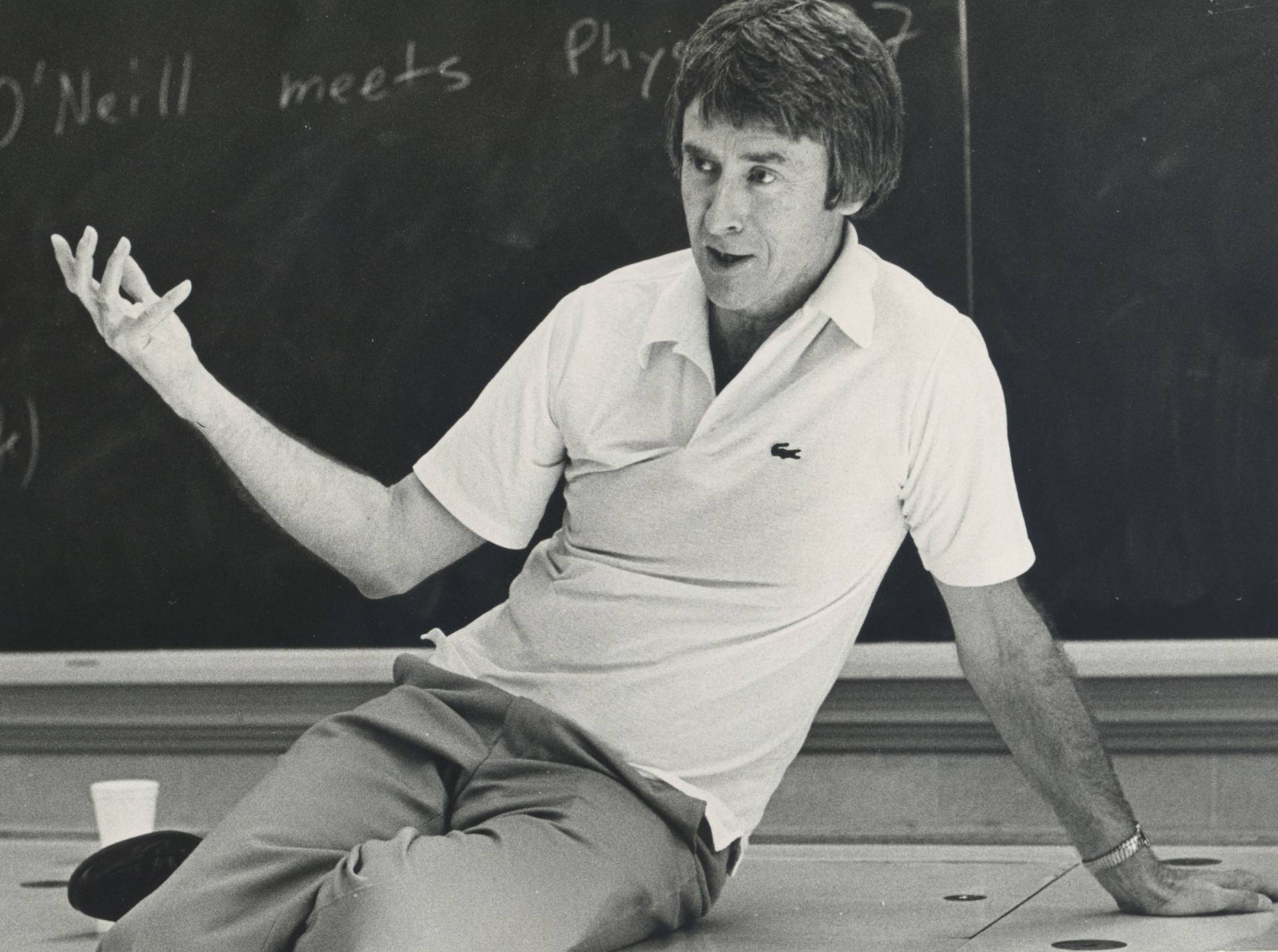This Space Available
By Emily Carney
Save for the recent book Humanizing Space: The Life of Gerard K. O’Neill written by Dylan Taylor with John Desimone and the documentary The High Frontier: The Untold Story of Gerard K. O’Neill, the life and work of the legendary Princeton physicist and space advocate had lapsed into obscurity 30 years following his premature death from leukemia. However, the Gerard K. O’Neill Collection — all 26.22 cubic feet, 75 boxes, and 35.14 linear feet — is now available digitally via the Smithsonian’s National Air and Space Museum archives. From his undergraduate days in the 1940s (one 1949 section of his papers is titled “Gadgetry” and comprises Box 56, Folder 8) to the conclusion of his life in 1992, the archives frequently fill in the many gaps left by his all-too-early passing.
The collection consists of O’Neill’s professional papers, his many publications and reports, personal papers, images (not necessarily personal photographs — many of his images are slides he made of his physics talks and lectures), and odd/oversized items. The many documents show how well O’Neill organized his professional career from its beginnings and how it arced from earnest student to Princeton physicist to astronaut hopeful and ultimately to futuristic space prophet. The fact that it’s easily navigable allows the collection to tell O’Neill’s story from start to finish.
For example, in his easily distinguishable loopy handwriting in Sharpie, his documents stemming from his 1966 tryout as a NASA astronaut (he nearly made it to the 1967 astronaut group, which boasted members such as Dr. Philip K. Chapman and Dr. Story Musgrave) illuminate the expectations and career steps an astronaut-scientist was required to make during that time. It’s also telling that one of the newspaper clips he kept from that period included Dr. Brian O’Leary’s 1968 resignation from the astronaut corps, citing his apprehension to complete pilot training. While O’Neill didn’t make it to the final cut, he still kept up with NASA’s news, and his brush with near-astronaut fame certainly contributed to his next career step: becoming a pillar of space advocacy and futurism.

His papers also cover his many book drafts, copious inventions, countless pages of equations, a quaintly titled folder called “To Be Done Around The House,” schematics and photos of his various aircraft, and more. Even his household projects are sketched out in his loopy handwriting in insane detail, full of rudimentary drawings on stationery; his inventiveness extended to the home front as well as the space front.
We find out that O’Neill, whose space habitation designs were utilized for the heritage Epcot ride Horizons, went to Epcot on its opening day, saw Spaceship Earth, attended an all-star gala, and probably enjoyed snacking around the World Showcase just like any other Disney tourist (he even kept a special edition of the Orlando Sentinel dedicated to the theme park’s opening). We also discover how busy O’Neill was up until his passing; a television appearance, magazine articles, and several new inventions (including his idea for designing a maglev train) are part of his papers and emphasize his heroism in the face of his cruelest adversary: chronic lymphocytic leukemia (CLL), which he was diagnosed with in April 1985.
In many ways, the collection speaks for O’Neill, whose voice was cut short in April 1992 by his blood disease; in a 1989 Air and Space magazine article written by For All Mankind director Al Reinert, he referred to his worsening illness as “a smoldering fire.” This magazine and his clip file containing many of his own articles can be accessed by searching through “Publications and Reports.”
Last year, Apollo and Shuttle astronaut Fred Haise released a website containing a wealth of archival information, including technical documents, diaries, and never-before-seen photos. While his autobiography Never Panic Early certainly satisfied many readers, the additional archival information added another dimension to Haise’s sometimes tumultuous but triumphant story. Similarly, in many ways, O’Neill’s collection gives a voice to a legend who hasn’t had his voice for over three decades.
O’Neill often referenced seeking “the unseen dimension” in his teachings; the Smithsonian Air and Space Museum collection lets us view the unseen dimensions of his very life — from mundane household tasks to the brilliant drafts that would become The High Frontier: Human Colonies in Space, his iconic 1976 book that is widely credited with starting “newspace.” What a treasure for O’Neill scholars and fans.
*****
Top photo: “NASA Artwork By: Don Davis. Space Colony: Torus Wheel — Large assemblies can be put together in space. On this part of the rim panels of a colony are being fitted in place. The small vehicles are called ANTS for Assembly of non-tethered ships.” 1975 NASA artwork depicting O’Neill’s space habitat idea.
This article was previously published on Medium.com.
Emily Carney is a writer, space enthusiast, and creator of the This Space Available space blog, published since 2010. In January 2019, Emily’s This Space Available blog was incorporated into the National Space Society’s blog. The content of Emily’s blog can be accessed via the This Space Available blog category.
Note: The views expressed in This Space Available are those of the author and should not be considered as representing the positions or views of the National Space Society.





















1 thought on “Dr. Gerard K. O’Neill’s Collection Underscores His Continuing Relevance, Intensity”
This is a great article Emily. I was very interested in O’Neill’s work in the 1980s although I could work the math to show how unrealistic some of it was. Nonetheless, exciting and thanks to you for bringing him to the forefront again.